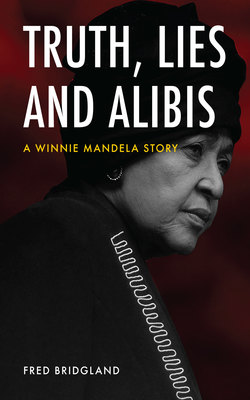Читать книгу Truth, Lies and Alibis - Fred Bridgland - Страница 11
На сайте Литреса книга снята с продажи.
Chapter 6
ОглавлениеDr Asvat, overwhelmed by terror, tells his friend about Stompie’s terrible injuries
If you can do no good, at least do no harm.
Kurt Vonnegut
Winnie Mandela now became deeply alarmed by the extent of Stompie Moeketsi’s wounds. She telephoned Dr Asvat and begged him to come to check the small boy. On arrival he examined Stompie’s head, ears and chest. He checked the other boys too: their wounds were less serious. He rubbed some ointment into their injuries before turning to Winnie and asking: “Who beat the boy like this?” Mrs Mandela told him Stompie had climbed a tree and fallen from a branch. Dr Asvat, angry and afraid, told Winnie: “The boy is seriously ill. He could die at any moment. I cannot save him. You must take him to hospital.”
Asvat drove straight from Mrs Mandela’s house to visit his close friend Reggie Jana, a spice merchant in the inner Johannesburg suburb of Fordsburg, and asked for a glass of whisky. Highly agitated, he told his friend that he feared for his life. He said he had just seen Stompie, who described to him how Mrs Mandela had beat him up. Winnie, in turn, had warned Asvat not to approach the police about what he had seen and heard.
****
I met Reggie Jana amid aromatic scents wafting from sacks and cartons of spices in his mahogany-lined warehouse. In the course of two long interviews,1 he told me: “Abu-Baker thereafter was not the same person I had known. He was never afraid of anyone, but after the events of Stompie he was a changed person. The man had fear in him. He did not know what next to expect.
“Abu-Baker said to me, ‘This effing bitch is giving me grief, causing problems and I fear for my life.’”
Asvat told Jana he could not believe the extent of the brutality that had been meted out to Stompie, Thabiso Mono, Kenny Kgase and Pelo Mekgwe. He said he had warned Mrs Mandela that Stompie’s wounds, particularly those to his head,2 were so extreme that he, as a general practitioner, could not treat them; she must get Stompie to a hospital or he would die.
Abu-Baker said that as he examined Stompie, the boy whispered to him, “Mrs Mandela and her men beat me to this pulp.”
Jana told me he had never before seen his friend in such a distressed state. “He was so upset and disgusted. He was shocked that individuals could inflict such third-degree body injuries. They were beaten so badly that he could not understand why. And that shock remained in him [until the end of his life]. All had different degrees of injuries, on their bodies, on their legs, arms, facial, head injuries. They were in a terrible state.”
Having seen the seriousness of Stompie’s injuries, and fearing the boy would die, Asvat said he considered going to the police. But he was frightened of Mrs Mandela, said Jana, “knowing well what a person she is and what she’s capable of doing. Winnie had the henchmen of hers [the Football Club] and they would go to any lengths.”
Jana said Asvat told him Mrs Mandela was so worried about police intervention that she threatened him, saying, “Look, you mention nothing. You treated no one and you know nothing. Look, hey, you’re not making any statement of any nature.”
****
After pouring his soul out to Jana, Dr Asvat went to the Mandela Crisis Committee and told its members that he had found Stompie so badly wounded on his visit to Mrs Mandela’s home that the boy would probably die.
The Crisis Committee had been established secretly with the imprisoned Nelson Mandela’s approval in August 1988, with a mandate to rein in Mrs Mandela and disband her Football Club so as to end the damage they were inflicting on the ANC’s public image. The committee comprised six prominent ANC members, including Cyril Ramaphosa, then the leader of the National Union of Mineworkers; Sydney Mufamadi, then the communist leader of the ANC-aligned Congress of South African Trade Unions and later a senior minister in Nelson Mandela’s post-apartheid government; the Reverend Frank Chikane, secretary-general of the South African Council of Churches; and Aubrey Mokoena, who was national coordinator of the Release Mandela Committee, set up in 1983 to raise funds to sustain the international campaign for Nelson’s freedom.
While alarmed by Dr Asvat’s revelations to them, the Crisis Committee never reported publicly their crucial meeting with Asvat nor the details of what he had told them.3
